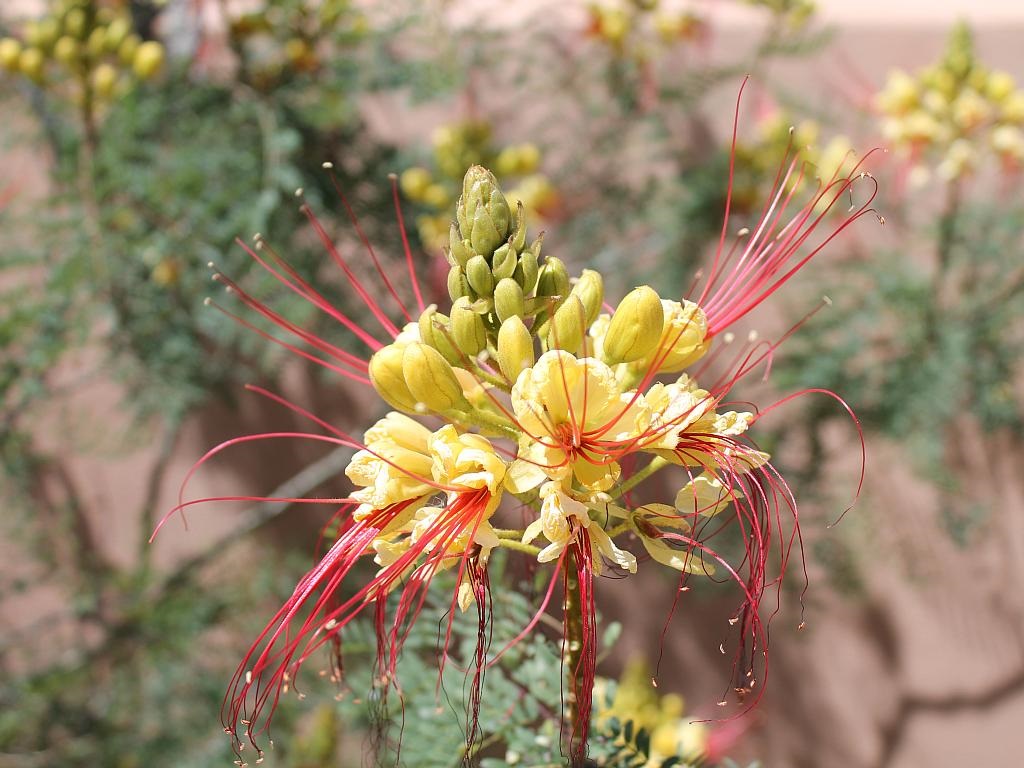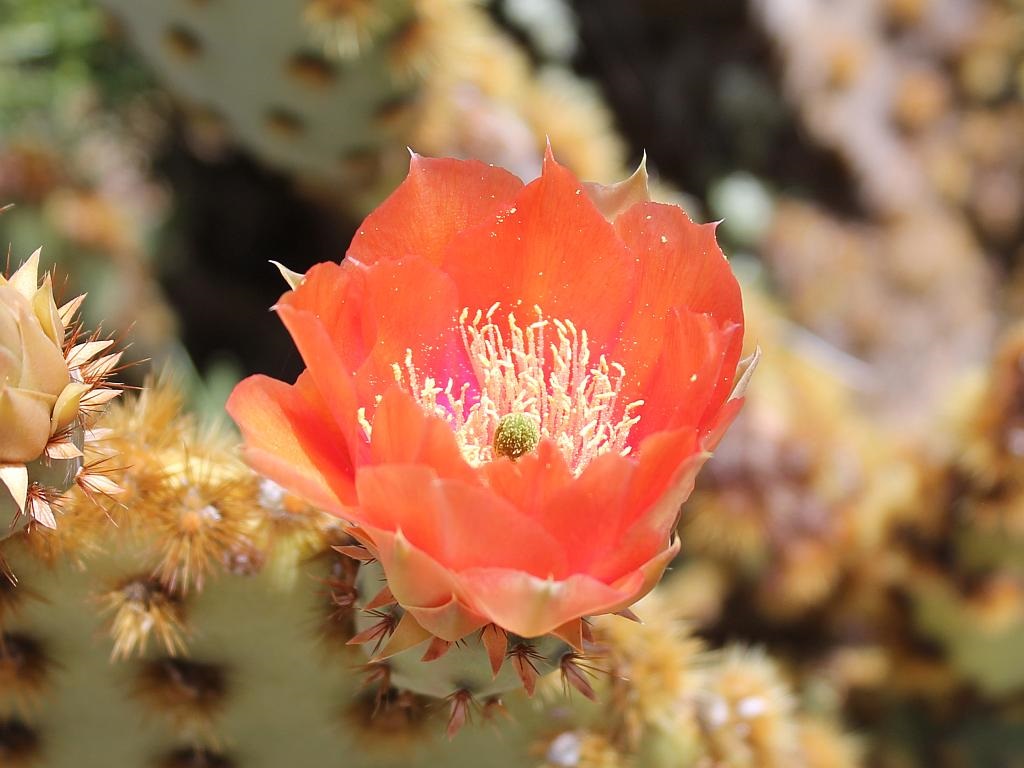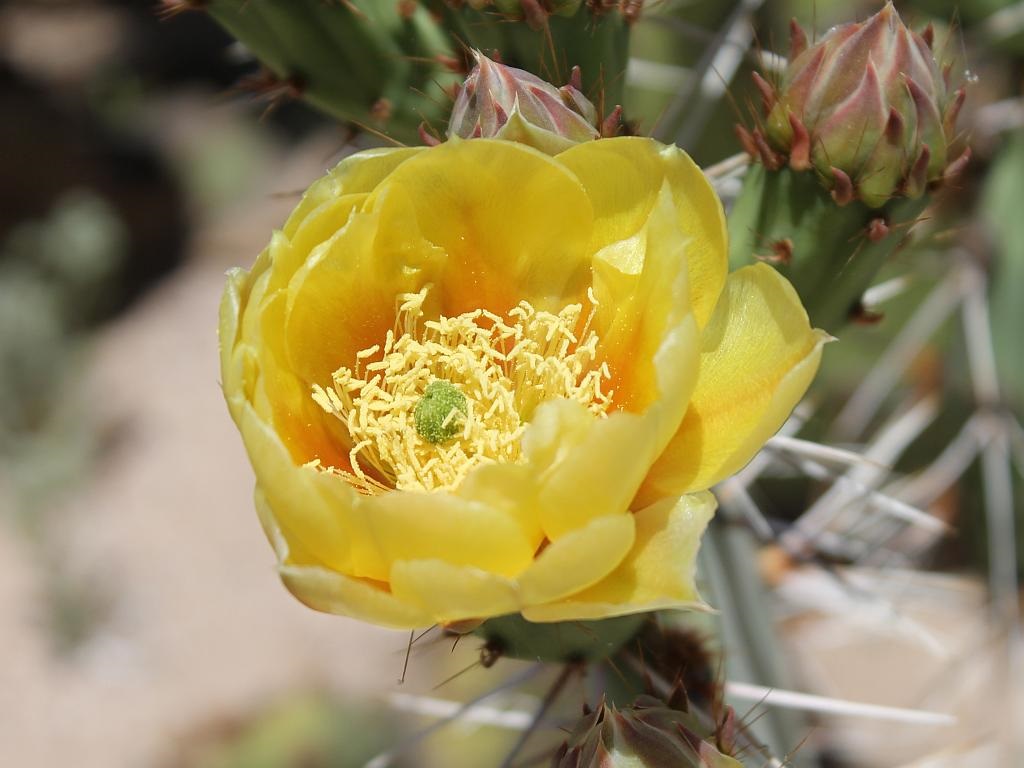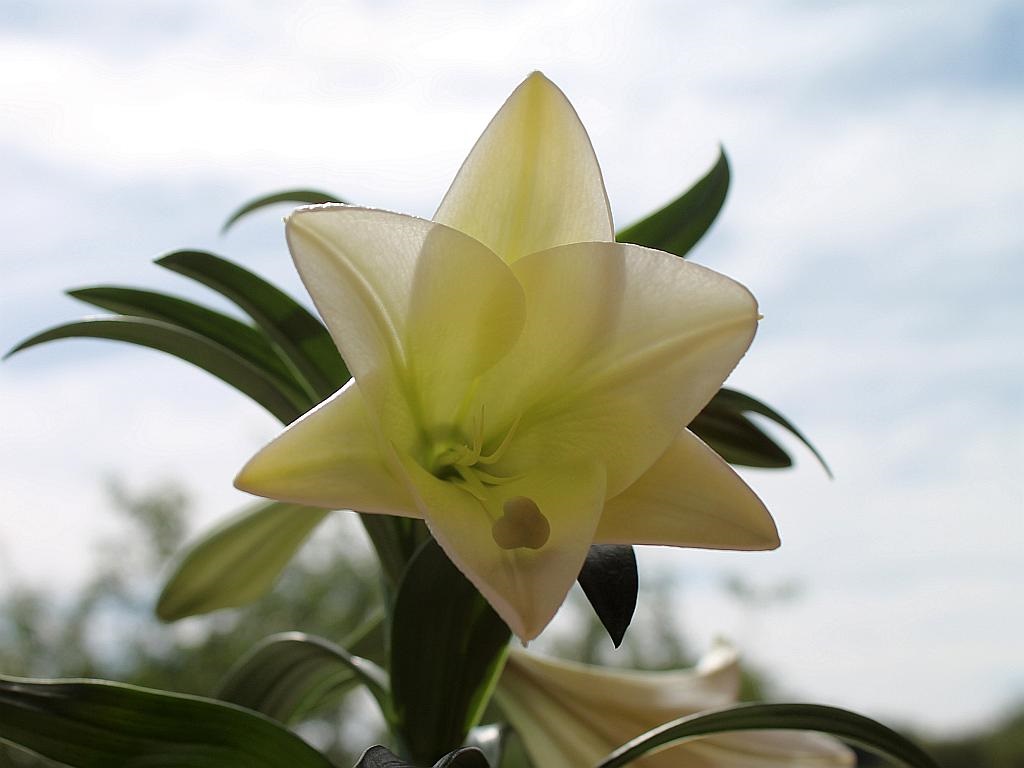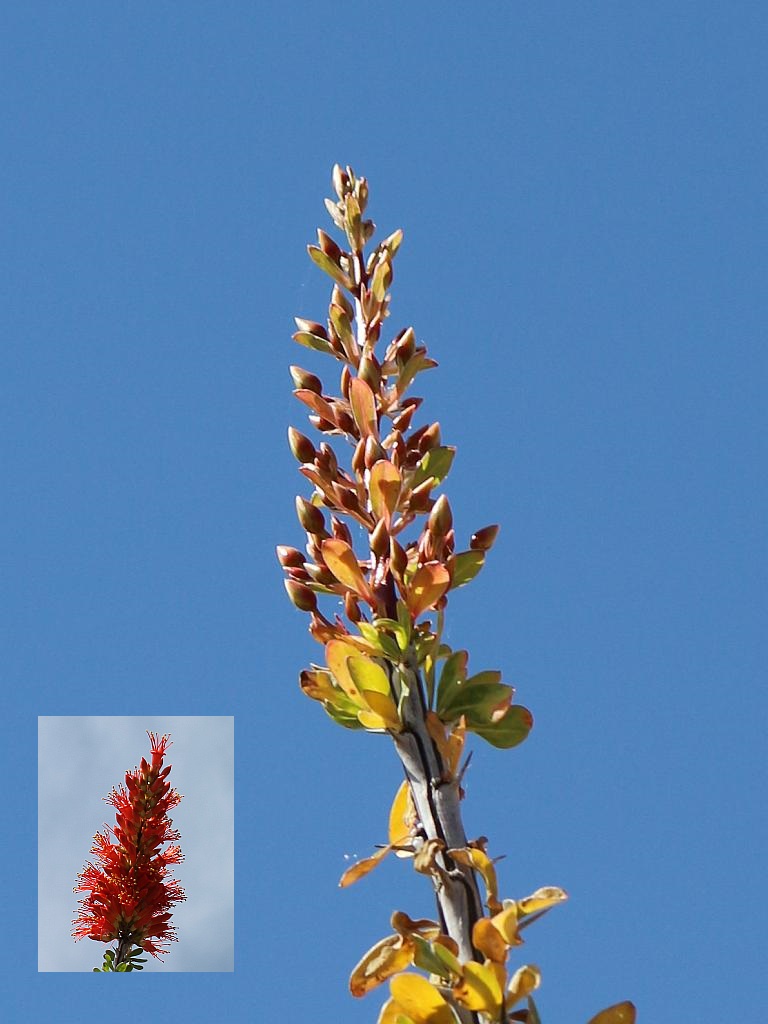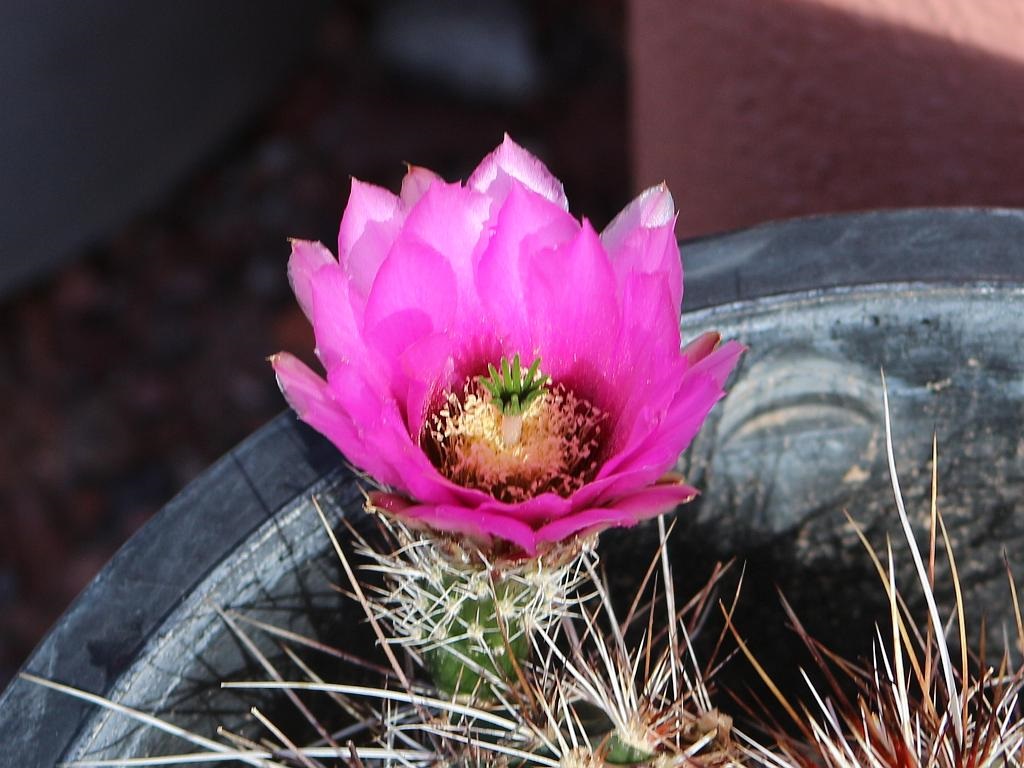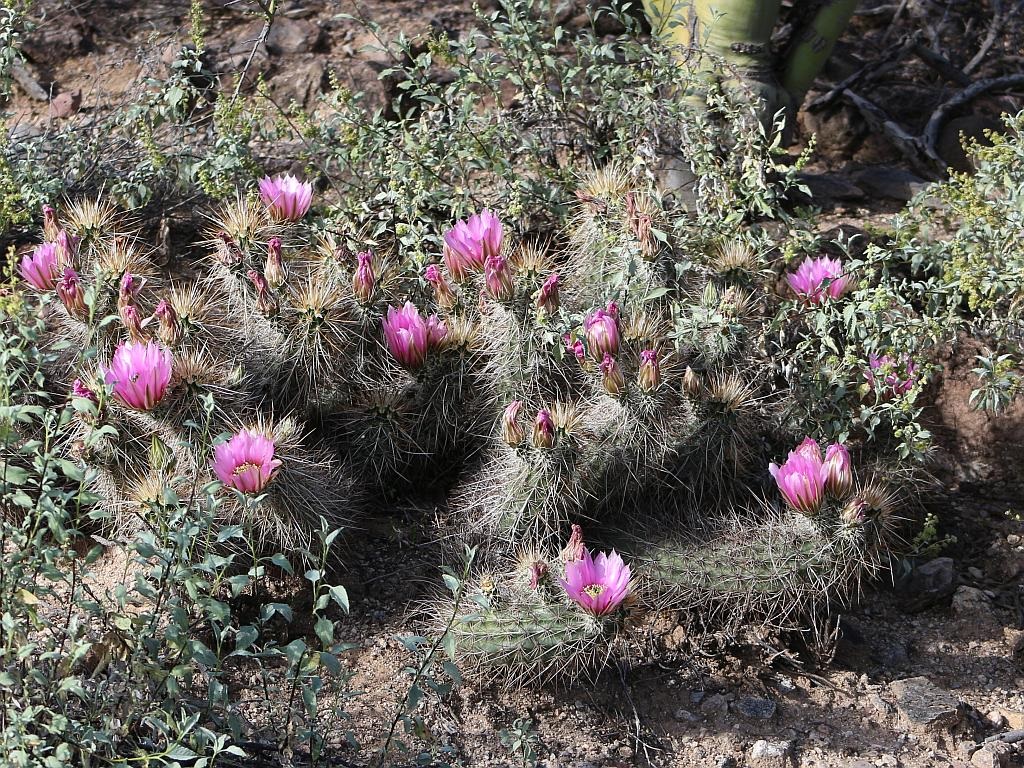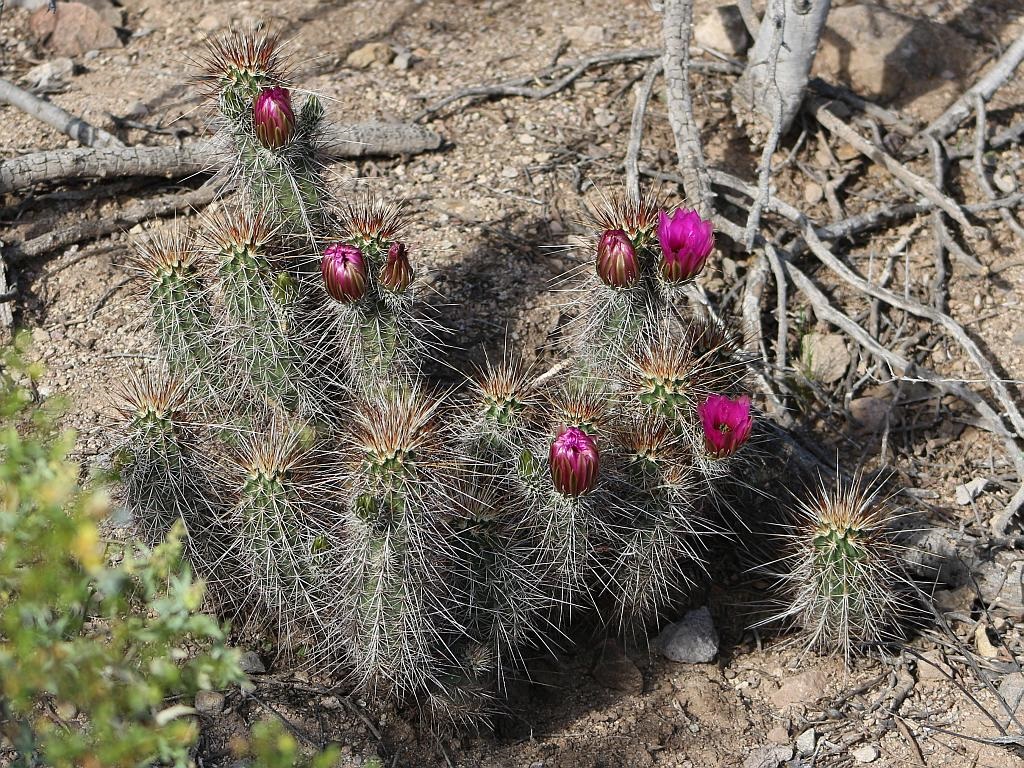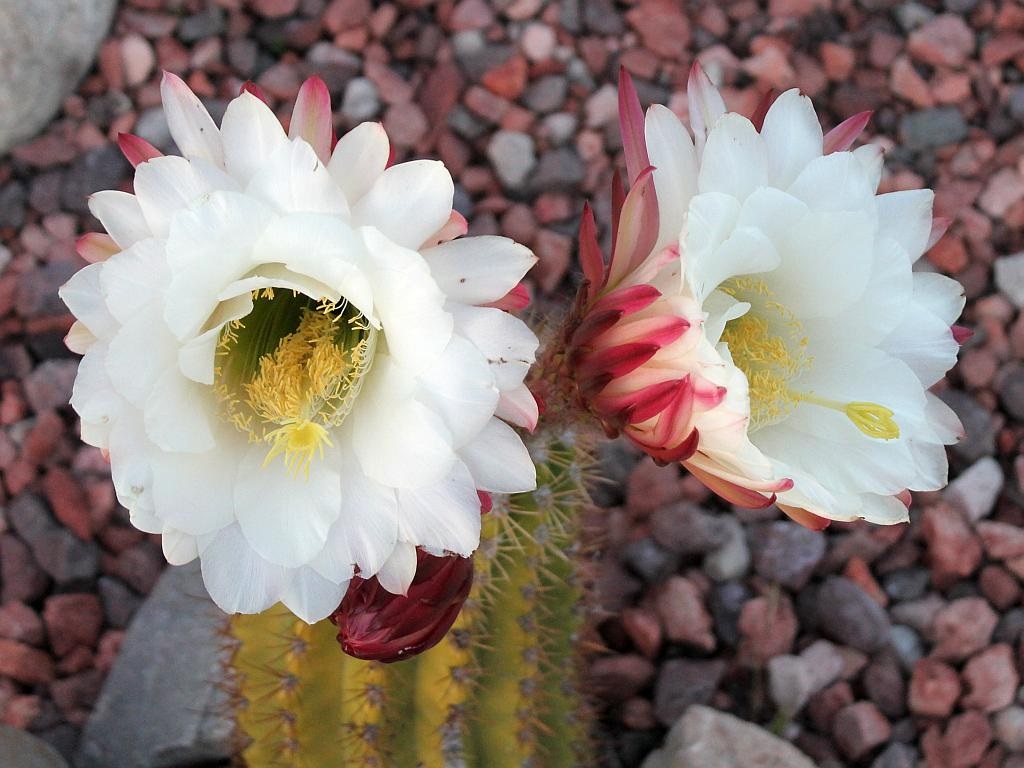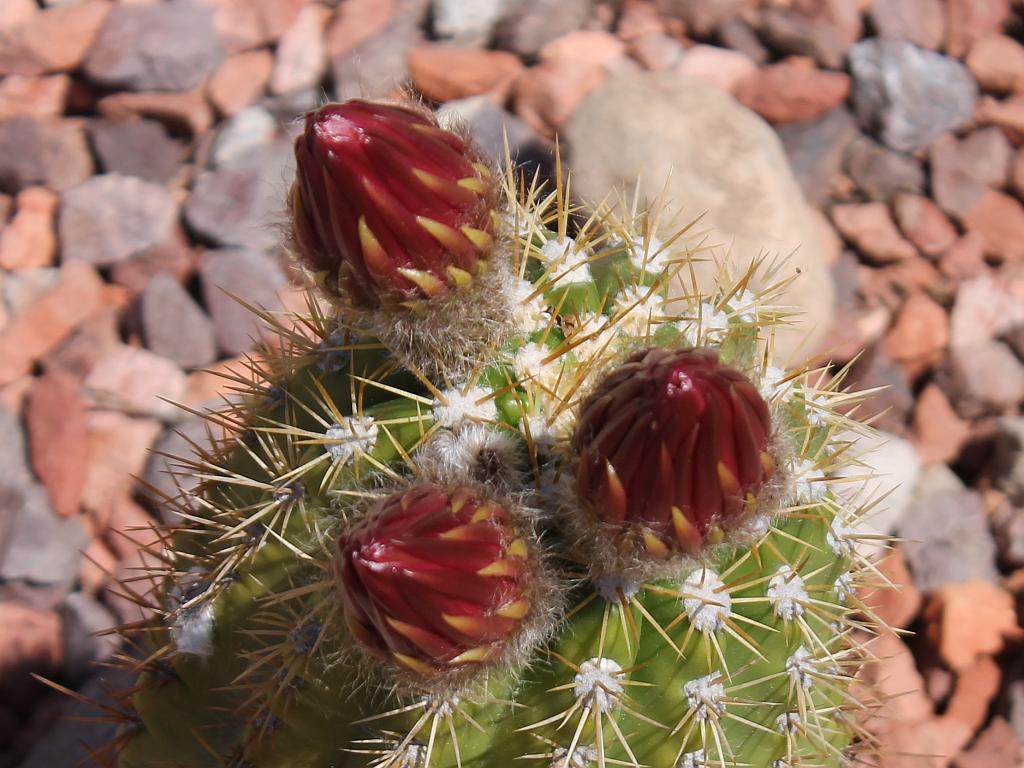We don’t have any of these in our inventory, but it might be nice to get one or two of them out in the west rock and cactus garden. they take up a bit more space than the Red Bird of Paradise which we have in the courtyard. A couple of the latter are beginning their annual new growth to become the four foot high shrubs with similar but brighter flowers than above. Click on the image to enlarge or click on the like to see the new growth.
Flowers
Prickly Pear Cactus Flowers
When we were in town the other day, we took a roundabout way home along a street known to have a lot of prickly pears in the homes’ landscape gardens. I was not disappointed when I saw that a few of their flowers had begun to open.
I couldn’t tell you which variety of prickly pear (opuntia) these were on, but they differed in flower color, paddle color and needle arrangements. The flower on the left is deep orange in color (it looked reddish from a distance) and the one on the right is a more common yellow color. Click on either image to enlarge.
Other than the beavertail variety, none of the prickly pears in our yard have open flowers, but there will be some for sure. I’m looking forward to seeing the flowers open on our lawyer’s tongue cactus that currently has several flower buds for the first time since we planted it in the rock and cactus garden.
Easter Lily
This Easter lily flower opened up just in time for the holiday. Most of the plants that were available in the store were either far from opening or already open and wilting. I was lucky to find this one that was just about to open and, lucky for us, opened yesterday. Click on the image to enlarge.
We hope everyone had a very good Easter and Passover.
Ocotillo Flowers Coming
We had the landscape guys replace the old ocotillo cactus that was in front of the house outside of the courtyard last year because it was dead. The new one is in the same place and is showing every sign of being a viable addition to our xeriscape.
Springtime is when many of the desert cacti get flowers and the ocotillo is no exception. The photo at the right shows the top of one of our ocotillo.s canes with the makings of a cluster of flowers. The inset shows a cluster that I photographed downtown yesterday. Click on the image to enlarge.
I am very excited to finally have ocotillo flowers. The old ocotillo never produced much of anything in the way of leaves nor flowers before it gave up the ghost last year. It once tried to have a flower, but it dried up and broke off before really becoming one.
Here are a few factoids about ocotillos from Wikipedia:
Fouquieria splendens (commonly known as ocotillo, but also referred to as coachwhip, candlewood, slimwood, desert coral, Jacob’s Staff, Jacob Cactus, and vine cactus) is a plant indigenous to the Sonoran Desert and Chihuahuan Desert in the Southwestern United States and northern Mexico.
Ocotillo is not a true cactus. For much of the year, the plant appears to be an arrangement of large spiny dead sticks, although closer examination reveals that the stems are partly green. With rainfall the plant quickly becomes lush with small (less than 1 inch) ovate leaves, which may remain for weeks or even months.
Individual stems may reach a diameter of 2 inches at the base, and the plant may grow to a height of 30 feet. The plant branches very heavily at its base, but above that the branches are pole-like and only infrequently divide further, and specimens in cultivation may not exhibit any secondary branches. The leaf stalks harden into blunt spines, and new leaves sprout from the base of the spine.
The bright crimson flowers appear especially after rainfall in spring, summer, and occasionally fall. Flowers are clustered indeterminately at the tips of each mature stem. Individual flowers are mildly zygomorphic and are pollinated by hummingbirds and native carpenter bees.
Cactus Rescue – Epilog
The last lobe of the hedgehog cactus we rescued opened it’s single flower today. That gives us confidence that all lobes still in pots will do OK until we can plant them in Damsel’s rock and cactus garden.
We may have mentioned before that we have a couple more wild hedgehogs in the upper lot. Well, both of those are now in bloom and, judging from the flower colors, they are each a different cactus variety.
We have already brought one hedgehog down from the back lot, so, in Damsel’s thinking, we should only bring a couple of lobes from the upper and lower back lot hedgehogs for the rock and cactus garden, leaving the rest to remain up in the natural desert part of the property.
Click on any of the images to enlarge.
Argentine Giant Flowers Now Showing
When we saw the white tips of the inner petals showing on the flower buds this morning, I knew that they would be open tonight. Two of the three large buds opened into the showy night-blooming flowers that make the Argentine Giant Cactus popular.
Echinopsis candicans is a species of cactus from northern Argentina. It has large fragrant white flowers that open at night.
The cactus has a shrubby growth habit, with individual stems up to 24 inches tall. The plant as a whole can be as much as 10 feet across. The stems are light green, with a diameter of up to 5.5 inches and have 9–11 low ribs. The large white areoles are spaced at 0.8–1.2 inches and produce brownish yellow spines, the central spines being up to 4 inches long, the radial spines only up to 1.6 inches. The fragrant white flowers are large, up to 7.5 inches across and 7.1–9.1 inches long.
Argentine Giant Flowers Coming Soon
My Argentine Giant cactus has several buds on it that will likely open into giant white flowers. It will probably be a couple of days, but three of the five buds are almost ready to pop open with the beautiful flowers. The other two flower buds will follow with a couple more flowers a bit later.
The cactus isn’t particularly a giant, but the six-to-eight inch diameter flowers certainly are, among common cactus flowers. The cactus itself is only about fifteen inches tall, hardly a giant when compared to the saguaro, for instance.
The flowers smell like a fresh sea breeze the evening they open. I will post pictures of the flowers when they open. Click on the image to enlarge.

